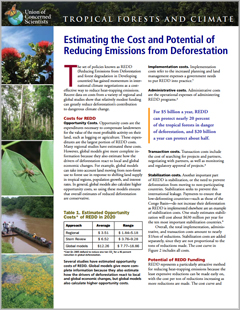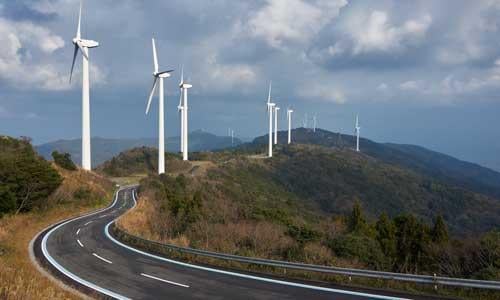REDD (reducing emissions from deforestation and forest degradation) is a very affordable way to reduce the amount of global warming pollution released into the atmosphere. In order to create an economic incentive for developing nations to reduce the clearing of their tropical forests, they would need to be paid more than they could make by using the newly cleared land for other activities like establishing cattle pastures or growing crops. Funding the preservation of tropical forests is considerably less expensive than the costs of reducing pollution from industries, vehicles and power plants. Using REDD policies, we can greatly reduce tropical deforestation, and thus reduce global warming, with modest funding.
Funding for a REDD system can come from a combination of three sources. The quickest source of funding would be voluntary funding from countries, individuals, or organizations. Voluntary funding presents the fastest way for developing nations to build up the capacity needed to protect tropical forests, so they can measure their reductions and follow the required certification processes. Industrialized countries must help developing countries acquire the technology and train their staff to ensure that certifiable reductions are made. Other countries have already begun giving voluntary funding to REDD programs. For example, Norway gives over $500 million yearly.
Another important source of REDD funding should be market-linked funding. There has been proposed legislation in the United States to set up a capped carbon market system in which companies will need to buy emissions “allowances” for the amount of global warming pollution they plan to emit. Every year the companies would be allowed to buy fewer allowances, thus cutting down on emissions over time. These allowances would be sold each year in an auction and the revenue from these sales can be used by the government for a variety of programs, including REDD. This arrangement would limit the global warming pollution coming from the United States and also provide funding to reduce pollution from tropical deforestation. Similar systems in other countries would also provide funding in this way.
The third source of money for REDD is direct carbon market funding. This funding would also come from the cap-and-trade carbon market, but in a different way. As fewer allowances are offered at auction, some companies will want to buy extra allowances if they have not yet found a way to reduce emissions. They could buy these extra allowances from programs that are making extra reductions, thus offsetting any extra pollution produced by the company. REDD programs could sell the reductions made by protecting tropical forests in this way. This funding will be more useful in later years because the tropical countries will have built up capacity and experience to ensure that they are providing high quality offsets: meeting strict certification criteria and showing they are representing real reductions in emissions.




